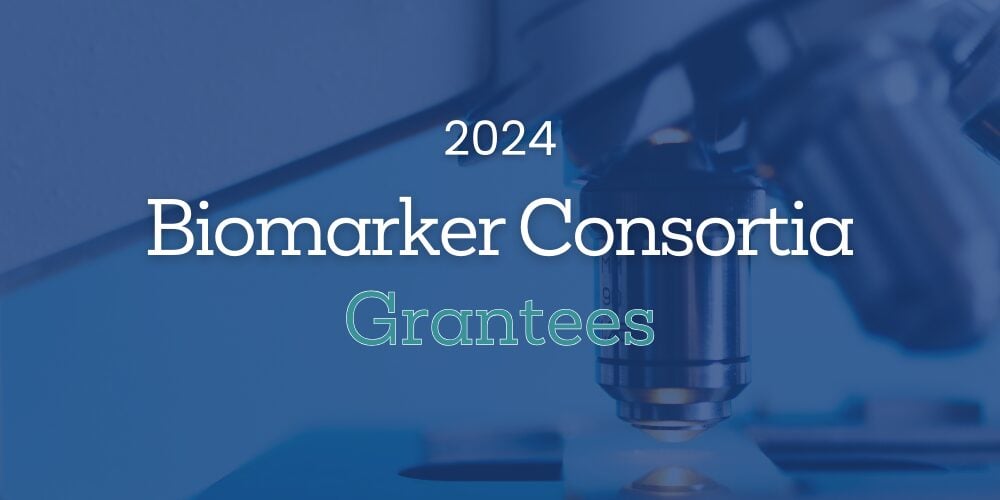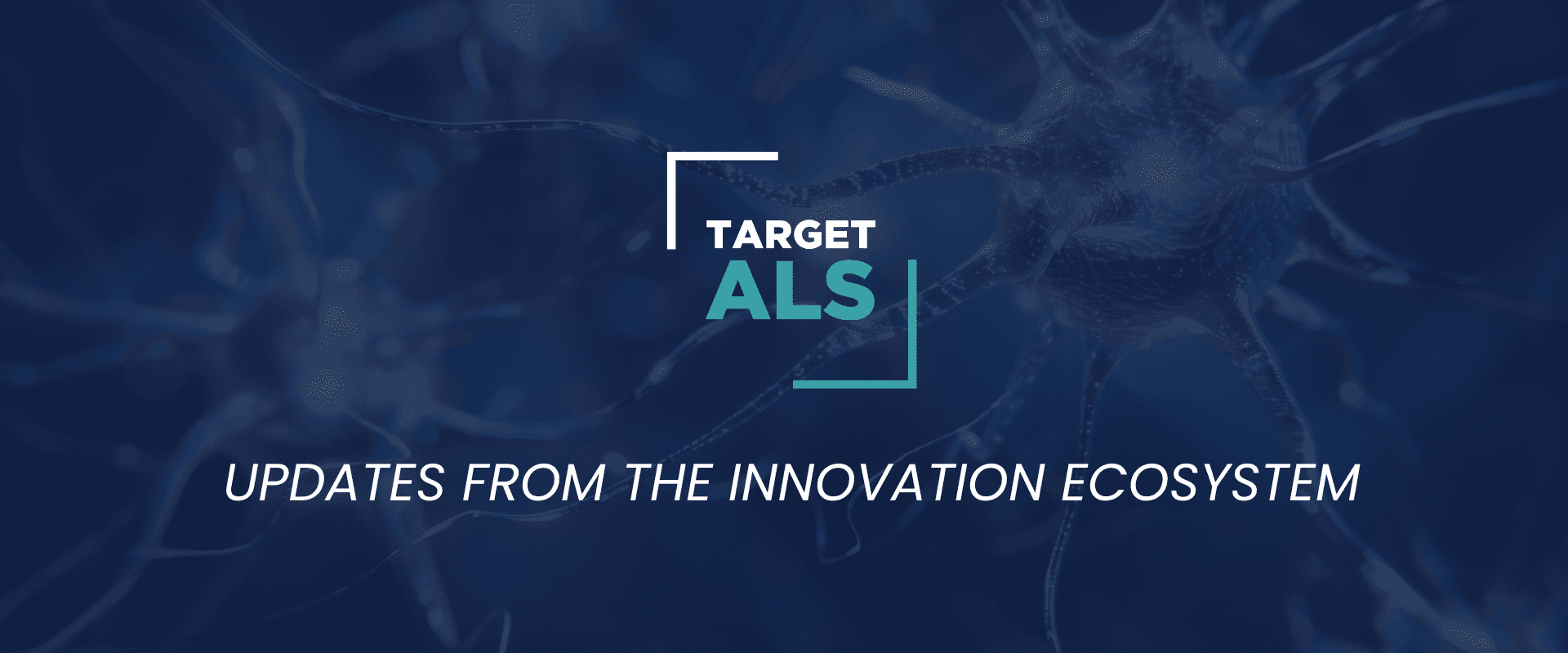
Leading-edge Researchers Focus on Disease Stratification and Progression
Collaborative groups pioneering the discovery and development of novel disease progression and patient stratification biomarkers will have their efforts bolstered as Target ALS awards five outstanding collaborative projects the Biomarker Consortia Grant this month. Biomarkers are needed to stratify patient populations, understand responses to therapeutics, and quantify disease progression. These grant recipients have showcased their commitment to identifying novel ALS disease progression and patient stratification biomarkers.
Key Objectives of the Biomarker Consortia Program
The Target ALS Biomarker Consortia Program aims to accelerate progress made in tracking disease progression and monitoring the effects of drug treatment. This program focuses exclusively on collaborations of groups of three to five scientists working around a common theme or target. At least one of the scientists in each collaborating group has to be based in a pharma/biotech company.
2024 Biomarker Consortia Grantees
Project Title: Translating novel ALS and FTD fluid biomarkers of TDP-43 pathology towards the clinic
Researchers: Dr. Arti Patel (Novartis), Professor Anja Schneider (DZNE), Dr. Alex Thompson (University of Oxford), Dr. Pegah Masrori (KU Leuven).
Project summary: TDP-43 is a key protein in ALS and Frontotemporal Dementia (FTD), forming clumps and losing its normal functions in cells affected by these diseases. Measuring loss-of-TDP-43 function in people living with ALS and FTD is crucial to developing both diagnostic tests and measuring the effectiveness of potential treatments. This consortium will develop ways to measure abnormal protein and RNA formed due to loss-of-TDP-43 function in fluid-filled bubbles, called extracellular vesicles, in blood and spinal fluid. These techniques will be used to understand TDP-43 dysfunction before and during the disease and to study the impact of drugs on these biomarkers to validate use of the biomarker in clinical trials.
Project Title: Liquid Biopsy for Amyotrophic Lateral Sclerosis Using Epigenetic Signatures from Plasma Cell-Free DNA
Researchers: Professor Albert La Spada (University of California Irvine), Dr. Sebastian Michels (Ulm University), Dr. Wolfgang Ruf (Ulm University), Professor Wei Li (UCI), Dr. Arthur Cheung (TWIST Biosciences).
Project summary: This consortium aims to develop a diagnostic and prognostic blood-based ALS biomarker. Analysis of cell-free DNA (cfDNA), when isolated from blood plasma, has become a valuable biomarker in many clinical areas. By analyzing a specific chemical change in cfDNA, researchers and clinicians can identify disease-related signatures. This approach has been piloted on samples from 60 ALS patients and controls (healthy individuals), where 80% of sporadic ALS patients were correctly identified with 100% specificity. In this project, researchers will test if cfDNA analysis can facilitate diagnosis of ALS and predict disease severity in 500 patients, re-validate cfDNA testing in 50 suspected ALS patients, and confirm findings in cerebrospinal fluid (CSF) and post-mortem tissues.

Project Title: Understanding the relevance of TDP-43-induced cryptic exon expression for synaptic dysfunction in ALS
Researchers: Professor Philip Van Damme (KU Leuven), Professor Rosa Rademakers (VIB), Dr. Eugeen Vanmechelen (Adx NeuroSciences), Professor Koen Poesen (KU Leuven), Professor Dietmar Thal (KU Leuven).
Project summary: In ALS, the death of motor neurons is linked to a build-up of a protein called TDP-43, which is important for controlling gene activity. Dysfunction of TDP-43 leads to abnormal gene expression, which can result in the inclusion of stretches of amino acids in proteins which are not typically present (“cryptic peptides”). Understanding how these abnormal proteins and pieces of proteins contribute to the pathology of ALS is a research priority. In this project, researchers aim to identify these cryptic peptides and study how they contribute to neuronal dysfunction.
Their aim is to generate accurate assays to detect them and which of these contributes to deficits in synapse signaling between neurons or between neurons and muscle and ultimately loss of synapses.

Project Title: KCNQ2 Biomarker for Precision Medicine in ALS
Researchers: Dr. Yossi Dagon (QurAlis), Professor Evangelos Kiskinis (Northwestern University), Professor Nicholas Seyfried (Emory University), Dr. Johan Skog (Exosome Diagnostics).
Project Summary: In 97% of ALS patients, the RNA-binding protein TDP-43 doesn’t work properly, is found in the wrong place, and clumps together. This dysfunction affects how the gene KCNQ2 and many other genes are spliced and expressed, disrupting their normal functions. KCNQ2 encodes a protein critical for the normal function of neurons. Without it, neurons can become “hyperexcitable;” this hyperexcitability is present and contributes to pathology in familial and sporadic ALS cases. A biofluid biomarker for KCNQ2 mis-splicing would therefore greatly benefit the understanding of TDP-43 pathology and its relationship to disease progression in people living with ALS. In addition, QurAlis has developed a drug (QRL-101) which has entered Phase I clinical trials that specifically activates the protein product of KCNQ2. This project will focus on the development and validation of biomarkers to assess KCNQ2 mis-splicing which could improve understanding of TDP-43 pathology in people living with ALS and may help with patient stratification for clinical trials with QRL-101.

Project Title: Transposable element in neuron derived extracellular vesicles: patient selection and treatment response biomarker
Researchers: Dr. Erez Eitan, Ph.D. (NeuroDex, Inc.), Dr. Marta Garcia Montojo (Twilight Neuro), Dr. Alain Prochiantz (BrainEver Pharma), Dr. Avindra Nath (NINDS).
Project Summary:. In ALS patients, TDP-43 and potentially other proteins lose function, leading to increased activity of specific genomic elements called “transposable elements” (TEs). This increased TE activity can lead to genetic instability/increased gene mutations and neuroinflammation. This collaboration between diagnostic and therapeutic companies and academia aims to develop a blood test that tracks TE activity, offering insights into ALS progression and treatment efficacy. The biomarker is based on the ability to capture extracellular vesicles released by neurons into the blood, followed by measuring TE levels. The utility of this biomarker will be studied in lab-grown cells, mice, and human blood to see how it responds to three potential treatments: a vaccine, protein replacement, and antiviral treatments.
About our Review Process
At Target ALS, we hold fairness and transparency paramount in our review process. The Target ALS Independent Review Committee (IRC) makes all research funding decisions without involvement from the organization’s staff or leadership, ensuring every application receives a fair evaluation. The IRC is comprised of experts across scientific disciplines from both industry and academia, reflecting the evolving nature of ALS research. To avoid any possible conflicts of interest, no member of the IRC can apply for or receive Target ALS funding for their own work. Members on the IRC abide by a comprehensive conflict of interest policy and are all under confidentiality agreements.
For more detailed information about the grants and the application process, please visit our Biomarker Consortia: Disease Stratification and Progression page.
Our Vision and Commitment
At Target ALS, our vision is to realize a world where everyone lives. We are driven by a sense of urgency, knowing that every day counts for people diagnosed with ALS. Currently, there are no treatments on the market that promise to make sporadic ALS a manageable disease. We are committed to funding cutting-edge research and fostering collaborations that will bring us closer to effective treatments for all forms of ALS.Together, we continue to strive for a future where ALS is no longer a life-threatening diagnosis. Thank you to all the applicants for their dedication and hard work. For more detailed information about our grants and the application process, please visit our Biomarker Consortia: Disease Stratification and Progression page.





